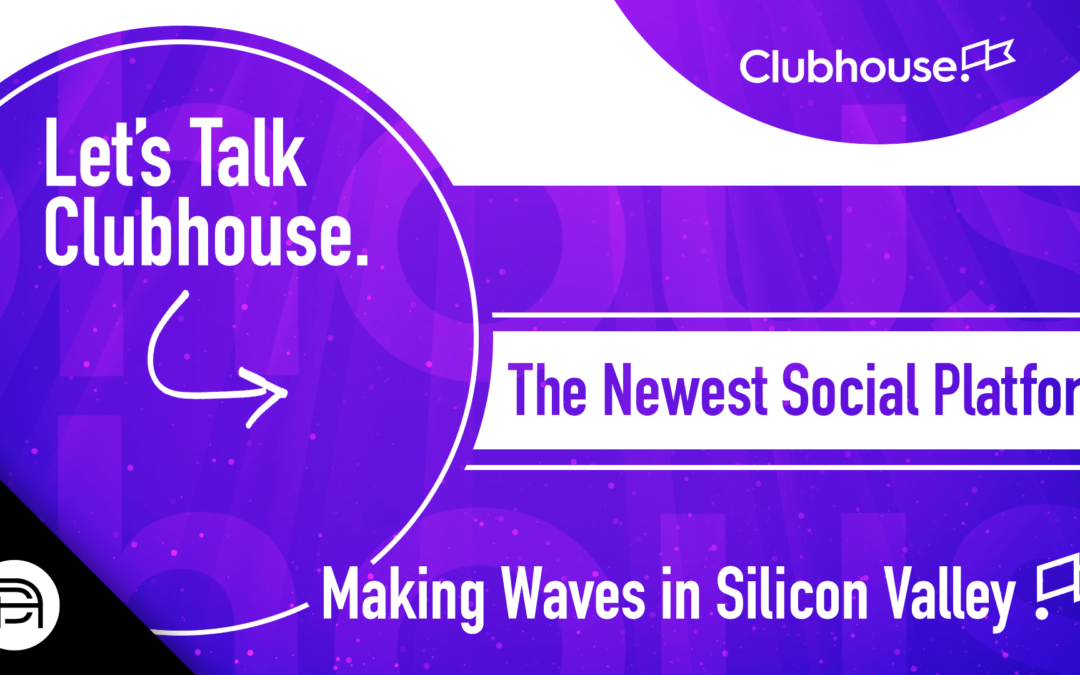The numbers are in, and they are pointing toward a new craze in the social media landscape. Clubhouse, a drop-in audio chat platform, is making headlines as their weekly active user numbers doubled over the last couple of weeks to 2 million. The app has seen heavy expansion, even with the invite-only beta that has, by design, limited a powder keg of expansion ready to explode.
Investors are already gearing up for this new unicorn. New reports suggest that the app has a billion-dollar valuation, a 10x valuation growth in a matter of months since its earlier Series A round. But what is the user experience like, and what will the opportunities for brands to connect with audiences on Clubhouse be?
Emily Le, our Senior Marketing Strategist, sat down with our Associate Director of Multicultural Strategy, Khari Motayne, to see what his experience was like using the app over the past month.
EMILY So Khari, what is Clubhouse?
KHARI If a podcast is a meal, Clubhouse is an all you can eat buffet of audio content. Think of it like a 24/7 digital conference center. There are virtual rooms about networking, dating – really any topic that you want.
EMILY Elaborate for us a little bit. How does it differ from some of the existing platforms?
KHARI All the successful social platforms so far have been visual. What goes with that is presenting ourselves based on that context. Audio being the medium means that the core content itself and the value it adds has a lot more focus. The range of that content is massive. In my time on the platform, I participated in a wealth-building session with will.i.am, a morning marketing meeting, a session on how to make it as a young actor, and a focus group for Black mental health. It felt, more so than existing platforms, like an online community.
EMILY How does Clubhouse stack up against the existing giants like Facebook, Instagram, or Twitter, and the emerging ones like TikTok?
KHARI This is the first social media platform that I can say does not compare. And that is a good thing. The shift into audio means the share of value shifts away from the visual elements and leans more on the actual content.
EMILY What are some of the use cases for brands and marketers? What is their monetization strategy?
KHARI Monetization is not quite there yet, but it is coming. Recently Clubhouse announced that they are looking into subscriptions, tipping, and ticket sales for their influencers. Brands and marketers should start thinking about branded partnerships, hosting e-conferences and panels, product launches, and even digital pop-up shops.
EMILY What are some risks you see going forward?
KHARI Social media is a hard business. The more Clubhouse succeeds, the more the other companies will invest in making a competing audio-focused offering. The other folks in Silicon Valley will not stand idle as this product kicks off.
EMILY So, who is using Clubhouse?
KHARI There was a great article on CNBC that explains it. Black users have powered the growth of this app. Young Black artists, in particular, have popularized this app and transformed it into this town square of culture. The Black community often plays the role of culture makers. Clubhouse is no different. I predict that Black audiences and creators will continue to be the secret sauce that accelerates growth on the app this year.
EMILY You often see brands shifting their messaging approach to adapt to the environment and the audience of that platform – take TikTok, for instance, where brands are more authentic and conversational. What do you think brands will need to do to succeed on Clubhouse?
KHARI I’m glad you brought up authenticity. As marketers, we tend to think about how we can make branded content for social platforms. Consumers, on the other hand, have repeatedly shown a bias towards user-generated content. As brands are thinking about how to use Clubhouse, they should have a bias towards community building. Aim towards creating opportunities for their consumers to advocate for them.
EMILY Taking a step back, why should a CMO care about this app? What can a marketer do here that they can’t do on any other platform?
KHARI As marketers, we have been talking about the opportunity in digital audio ads for years. I predict that Clubhouse will be a lightning rod for the audio advertising ecosystem, much in the way Instagram was to visual content over ten years ago. So, even for brands that do not have use cases now, they should have someone on their marketing team following this and brainstorming how to use it.
EMILY What brands do you see benefiting the most from adding Clubhouse to their marketing strategy?
KHARI Entertainment is one where there is the immediate opportunity to add value, especially as we see this pivot to digital movie releases. Take Disney+ for example. Imagine having a discussion room going live after every episode of the Mandalorian. Sometimes those discussion rooms can feature the actors or directors and crew. It is the commoditization of the type of community building that was once reserved for conventions and festivals.
That one is a freebie, but we will have to charge you for the next one, Disney.
EMILY So, Khari. We all know the last question, arguably the most important one of this interview…can I get an invite?
KHARI There are two ways to join. With the direct invite, each user gets invites they can send to their friend’s phone number. The second is the back door. If enough of your friends are already in, you may get bumped up the waitlist. I used up my first one, but I may happen to have three new ones.
EMILY That is not a no, so I’ll take it.
– Khari Motayne, Associate Director of Multicultural Strategy & Emily Le, Senior Marketing Strategist
For more information on the Clubhouse app, please contact [email protected] to schedule an informational session.



